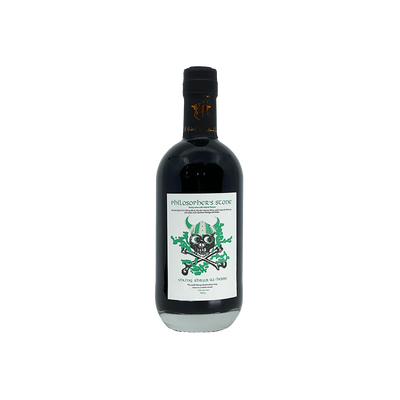Herbal Mead
What is Herbal Mead?
Herbal mead is a specific type of Flavored Mead that incorporates various herbs, spices, and botanicals during the fermentation process or aging period. These ancient fermented honey wines gain complexity and medicinal properties from additions like rosemary, thyme, lavender, ginger, or traditional brewing herbs such as heather and meadowsweet. What defines herbal mead is the intentional use of plant materials beyond simple fruits or grains, creating beverages that often carry historical significance and therapeutic qualities that connect modern drinkers to centuries-old brewing traditions.
Learn More About Herbal Mead
What makes Herbal Mead unique?
Herbal mead stands apart from other flavored meads through its sophisticated use of medicinal and culinary herbs that create complex, often bitter or astringent flavor profiles rather than simple sweetness. While fruit meads rely on natural sugars and acids, and spice meads focus on warming aromatics, herbal meads incorporate plants like hops, elderflower, or nettle that can add earthy, floral, or even slightly medicinal notes that challenge and intrigue the palate. This category often draws from ancient brewing traditions where herbs served both flavoring and preservative purposes, giving herbal meads a historical authenticity that connects modern drinkers to centuries-old meadmaking practices.
How is Herbal Mead made?
Herbal mead starts with the basic mead foundation of honey, water, and yeast, but gets its distinctive character through the addition of herbs, spices, or botanicals during fermentation or aging. Meadmakers typically add their chosen herbs either during the primary fermentation for deeper integration, or during secondary fermentation for more pronounced flavors - popular additions include lavender, rosemary, chamomile, or warming spices like cinnamon and clove. The herbs can be added directly to the fermenting vessel, steeped as a tea that's blended in, or even used to create tinctures that provide precise flavor control.
How do you drink Herbal Mead?
Herbal mead shines brightest when sipped neat at cellar temperature, allowing its complex botanical flavors and honey sweetness to unfold naturally on your palate. While it works beautifully in wine-style cocktails like spritzers with sparkling water and fresh herbs, or in place of vermouth in modified martinis, the traditional approach of drinking it straight from a goblet remains the gold standard. This ancient beverage feels perfectly at home during autumn gatherings and winter celebrations, when its warming spices and rich honey notes complement the cozy, contemplative mood of cooler seasons.
How do I choose good Herbal Mead?
Start by considering the herb blend and honey base—lighter honeys like wildflower pair beautifully with delicate herbs like lavender or chamomile, while robust buckwheat honey can stand up to bold additions like rosemary or thyme. If you're planning to mix cocktails, opt for meaderies that list specific herbs and their intensity levels, as some herbal meads work better as sipping spirits while others shine when mixed with citrus or sparkling water. Look for producers who source their honey locally and use fresh or properly dried herbs rather than artificial flavoring, since the quality of these core ingredients will make or break your drinking experience.
Nutritional Information
Typical Calorie Range per Ounce: 20-35 calories
Typical Carbohydrate Range per Ounce: 2-6 grams
Typical Sugar Range per Ounce: 1-4 grams
Typically Gluten Free: Yes
Herbal meads are generally gluten-free since they're made from honey, water, yeast, and herbs rather than grains. The addition of herbs like lavender, elderflower, or chamomile doesn't change this basic gluten-free nature. That said, always check the specific product label and manufacturing details to confirm gluten-free status, especially if you have celiac disease or severe gluten sensitivity. Some meaderies might use shared equipment or add ingredients that could introduce gluten contamination.
Scrolled this far? Your reward? Herbal Mead Trivia!
- Medieval monks weren't just brewing beer – they were creating herbal meads that doubled as medicine. Abbey kitchens would infuse honey wine with everything from rosemary for memory enhancement to elderflower for treating colds. These "medicinal meads" were prescribed by monastery physicians and often contained over a dozen different herbs in carefully guarded recipes that some monasteries still protect today.
- The ancient Egyptians believed certain herbal meads could help the deceased navigate the afterlife. Archaeological evidence from King Tutankhamun's tomb included clay vessels containing residue of mead infused with blue lotus petals and myrrh. These sacred brews were thought to provide spiritual protection and were so valuable that they were buried alongside pharaohs as currency for the gods.
- Vikings didn't just drink mead to celebrate – they used herbal versions as battle fuel. Norse warriors would consume meadowsweet and juniper-infused mead before raids because they believed it made them fearless and strengthened their sword arms. The tradition was so ingrained that "mead halls" became the center of Viking social and military planning, with different herbal blends reserved for different types of warfare.
- Modern herbal mead makers have discovered that certain botanicals can actually speed up fermentation by up to 40%. Herbs like lemon balm and chamomile contain natural enzymes that help yeast work more efficiently, while others like lavender and thyme possess antimicrobial properties that protect the mead from unwanted bacteria. This means some herbal meads are actually more reliable to produce than traditional plain honey versions.
- The phrase "honeymoon" comes from the ancient tradition of gifting newlyweds a month's supply of fertility-enhancing herbal mead. Couples would receive special brews containing herbs like damiana, ginseng, and fenugreek, which were believed to boost romantic energy and increase chances of conception. The tradition was so widespread that many European languages still use variations of "honey month" to describe the post-wedding period.
Higher-proof spirits can be intense. Mix carefully, taste thoughtfully, and enjoy responsibly.
Gift message (optional)

